China is a huge country in East Asia whose vast landscape encompasses grassland, desert, mountains, lakes, rivers and more than 14,000km of coastline. There are plenty of amazing tourist attractions in China, from the Forbidden City of Beijing and the famous Great Wall, winding for 6,700 kilometers from the Yellow Sea to Central Asia, and other famous sites from ancient cities to forests to temples to rice fields that look like they’ve been designed by artists to sacred mountains and stunning waterfalls. An overview the top
tourist attractions in China:
Note: This article only covers mainland China. Not have For Macau, Taiwan and Hong Kong.
10. The Bund
The Bund or Waitan is a waterfront area in central Shanghai. The area centers on a section of Zhongshan Road, which runs along the western bank of the Huangpu River in the eastern part of Huangpu District. The area along the river faces the modern skyscrapers of Pudong District. The Bund is popular for its 52 preserved English and French influenced buildings, many now restaurants, cafés, stores, and galleries. It is one of the most famous tourist destinations in Shanghai. Building heights are restricted in the area.
9. Honghe Hani Rice Terraces
The Honghe Hani Rice Terraces are the system of Hani rice-growing terraces located in Honghe Prefecture, Yuanyang County, Yunnan. The terraces' history spans around 1,200 years, were created to bring water down from the forests to allow for farming on the slopes. The core area of the terraces is located in Yuanyang County. The rice terraces are flooded from December to March, presenting a spectacular view to travelers. In 2013, the Honghe Hani Rice Terraces were listed as a World Heritage Site.
8. Classical Gardens of Suzhou
The Classical Gardens of Suzhou are a group of gardens in Suzhou region, Jiangsu province. The gardens flourished in the mid-Ming to early-Qing dynasties, resulting in as much as 200 private gardens. Nowaday, there are 69 preserved gardens in Suzhou, and all of them are designated as protected "National Heritage Sites." The gardens of Suzhou "represent the development of Chinese landscape garden design over more than two thousand years," and they are the "most refined form" of garden art. It has been added to the UNESCO World Heritage List in 1997 and 2000.
7. Mount Huang
Mount Huang is a mountain range in eastern China also known as Huangshan (“Yellow Mountain”), is one of the top scenic attractions in China. It is a granite massif consisting of 36 separate peaks, rising above 1,800 m. Famous throughout Chinese artistic history, Huangshan represents the typical mountain in Chinese paintings. Frequently shrouded in mist, the many peaks appear to float on clouds. Jagged peaks clothed in uniquely shaped pine trees create a spectacular landscape of great interest to artists and photographers.
6. Li River Cruise
Located in Guangxi Zhuang Autonomous Region, China. The Li River flows 83 kilometres (52 mi) from Guilin to Yangshuo, with the landscape is decorated by amazing hills, steep cliffs, incredible caves and farming villages, is lined with bamboo groves,and taste of a life far removed from the concrete metropolis, the scenery along the Li River is one of the top tourist attractions in Guangxi Province. Tourist cruises in different boats are offered on the Li River throughout the year.
5. Potala Palace
Situated 130 meters above the Lhasa valley, the Potala Palace rises a further 170 meters and is the greatest monumental structure in all of Tibet. The construction of the palace began in 1645 during the reign of the 5th Dalai Lama and by 1648 the Potrang Karpo, or White Palace, was completed. The Potrang Marpo, or Red Palace, was added between 1690 and 1694. The Potala Palace is measures 400 metres and thirteen stories of the Palace—containing over 1,000 rooms. It remained the residence of the Dalai Lama until the 14th Dalai Lama fled to India, after the Chinese invasion in 1959. It is now a museum and World Heritage Site.
4. Terracotta Army
Discovered on 29 March 1974 to the east of Xi'an in Shaanxi province, China. The Terracotta Army is a collection of terracotta sculptures depicting the armies of Qin Shi Huang, the first Emperor of China. It is a form of funerary art buried with the emperor in 210–209 BCE, It includes the three pits containing the Terracotta Army held more than 8,000 soldiers, 130 chariots with 520 horses and 150 cavalry horses, the majority of which remained buried in the pits nearby Qin Shi Huang's mausoleum. The Terracotta Army is the most popular tourist attraction in Xi’an and is one of the most famous archaeological finds in the world.
3. Summer Palace
Built in 1750, but largely destroyed in the war of 1860 and it's restored in 1886 – is a masterpiece of Chinese landscape garden design. The Summer Palace is a vast ensemble of lakes, gardens and palaces in Beijing. Mainly dominated by Longevity Hill and Kunming Lake. The natural landscape of hills and open water is combined with artificial features such as pavilions, halls, palaces, temples and bridges to form a harmonious ensemble of outstanding aesthetic value". It's one of China's most visited attractions.
2. Forbidden City
Located in the centre of Beijing, the Forbidden City was the Chinese imperial palace from the Ming dynasty to the end of the Qing dynasty—the years 1420 to 1912. The complex consists of 980 buildings and covers 72 ha. The palace complex exemplifies traditional Chinese palatial architecture. It is now houses the Palace Museum, whose extensive collection of artwork and artefacts were built upon the imperial collections of the Ming and Qing dynasties. Nowaday, it is the most popular tourist attraction in Beijing.
1. Great Wall of China
The Great Wall of China is a series of fortifications made of stone, brick, tamped earth, wood, and other materials, built along an east-to-west line across the historical northern borders of China to protect the Chinese states and empires against the raids and invasions of nomadic tribes from the north. The Great Wall of China is one of man’s greatest engineering feats and longest outdoor museum. It's the top tourist attraction in China and is one of New 7 Wonders of the World.

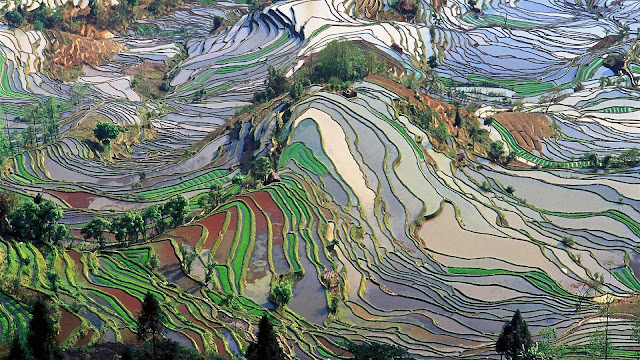

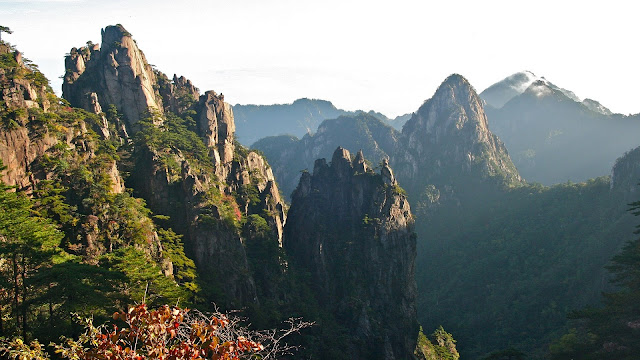
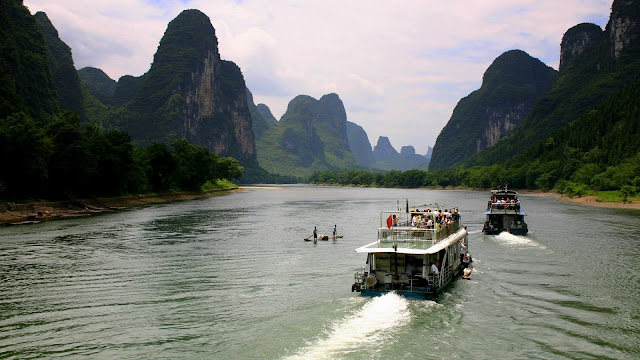

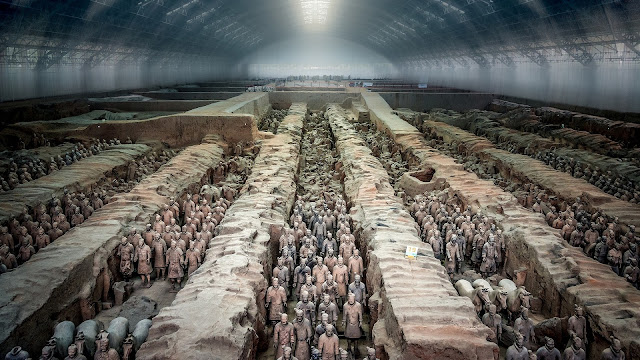
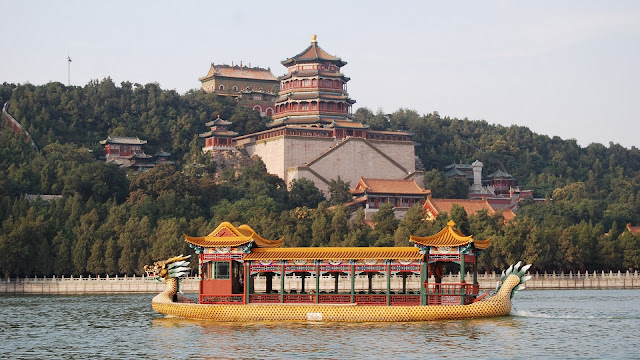
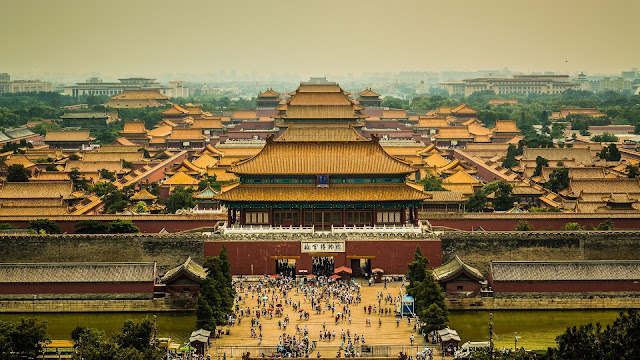
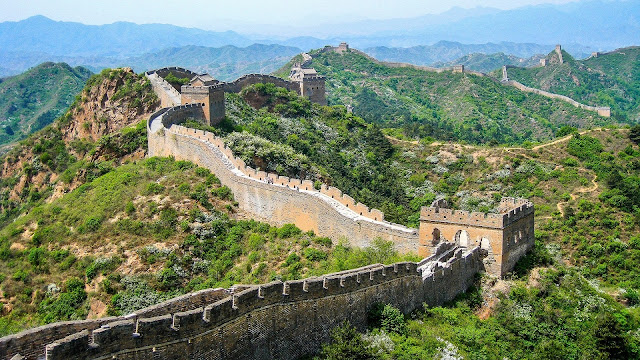
 Reviewed by Bynn Du
on
5/05/2017
Rating:
Reviewed by Bynn Du
on
5/05/2017
Rating:
 Reviewed by Bynn Du
on
5/05/2017
Rating:
Reviewed by Bynn Du
on
5/05/2017
Rating:










Không có nhận xét nào: